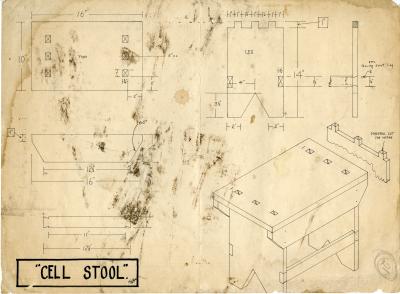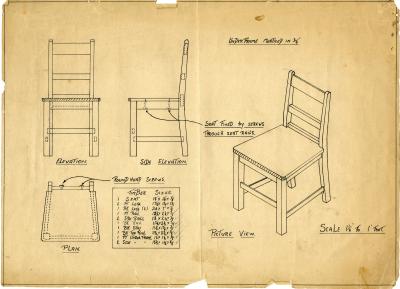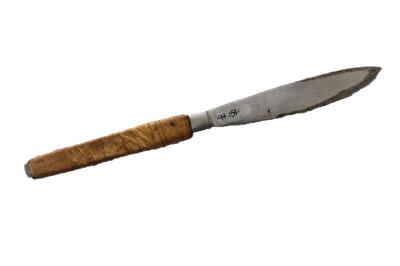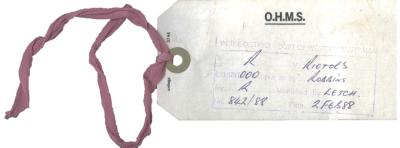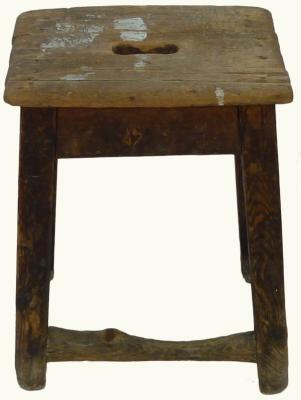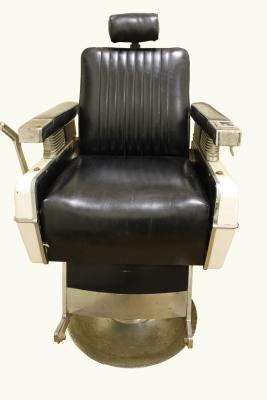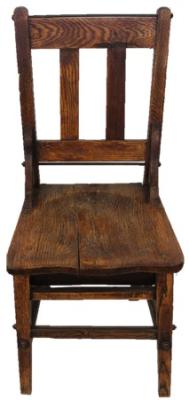EARLY KELLY TYPE AXE HEAD
Incomplete, small, early Kelly type, corroded metal axe head used for cutting hardwoods. Rectangular, wedge shaped, piece of heavy metal, with a severely corroded surface. One edge is thinned to form a blade, which is now fractured. The seam is visible along the wider opposite edge.
Recovered from 1993 archaeological excavation under the Main Cell Block (4 Div.), later called 'The Commissariat'. See report by P.Bindon & J.-P. Raynal (March 1993) titled 'Excavations in Fremantle Jail'. Possibly used to shape limestone during construction of Prison.
Details
Details
At the beginning of European settlement in Australia, all tools and equipment used by convicts and free settlers alike were those bought out from England. These tools, particularly the English style axe, were of a design unsuited to Australian conditions. These axes had a long shank, narrow cutting blades and long handles, which over the centuries had been adapted to local English conditions, designed to cut alder, oak and pine. Remaining fundamentally unchanged, these axes proved inefficient, unwieldy and energy wasting, and far from proficient when used on Australia’s much tougher, native hardwoods.
By the 1870s there was a range of imported axes available in the Australian colonies, including the Collins, Plumb and Kelly from America, the Elwell, Braide and Gilpin from England and the Jarrahdale from Sweden. However, when a blacksmith’s forge was established on the grounds of the Convict Establishment, tools were presumably fabricated and repaired on site, and therefore could be adapted for local conditions. Despite this local manufacturing however, the raw materials would still have been imported, almost certainly from England.
An archaeological excavation under the Main Cell Block in 1993 uncovered 33 axe heads that had been buried under more than a metre of dirt. These axe heads are thought to have been manufactured by transported convicts on site at Fremantle Prison. They were of a type used to quarry and dress building blocks, from the soft local limestone.
These axes where fabricated by joining along a central plane by forge welding two plates of puddled wrought iron, a central region being left unwelded to form a shaft hole. A section of crucible steel was then inset into the bit edge, also by forge welding (a process known as steeling). To complete this process a high level of blacksmithing skill was required, however, abnormalities which are present in these axe heads point to the inexperience of their convict manufacturers. For example, there is evidence of the difficulties of achieving weld bonding in regions adjacent to the shaft hole, and avoiding ‘burning’ in both wrought iron and steel during the steeling operation. High-carbon hypereutectoid steel was used in the inserts, but they were inserted in normalized conditions, that is they had not been quench hardened, as might have been expected to take full advantage of the steeling process.
These axe heads are representative of the types of tools manufactured and used in the early Convict Establishment. They have high research and historic significance, as their style and appearance makes it possible to discern the manufacturing techniques employed in the Establishment, and the possible skill levels of those convicts who worked in the site’s early workshops. These axe heads were discovered as part of a professionally led archaeological investigation, meaning their provenance is meticulously recorded, increasing their historic and social significance.

